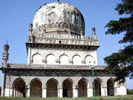Hyderabad Survey on Urdu newspaper readers Most readers buy their copy
Extract:
By A Staff Writer Islamic Voice, June 2010
Hyderabad:
A survey of reading habits of Urdu newspaper readers here reveals that 90 per cent of these readers buy Urdu dailies and read it within the confines of their homes. The survey disproves that most Urdu newspapers are read in the tea houses or restaurants, as was though so far.
The survey was carried out by the students of the Department of Journalism and Mass communication of the Maulana Azad National Urdu University, a central university, recently among 500 respondents. The survey found only 5.6 per cent readers looking at newspapers in restaurants, tea houses or hair cutting saloons.
The findings are significant as Hyderabad is premier centre of Urdu journalism in India and several leading Urdu dailies are published from the city which include Daily Siasat, Rashtriya Sahara, Rahnuma e Deccan, Munsiff, Itimaad, Milap etc. Thirty two per cent of the respondents said they read English newspapers along with Urdu dailies in order to get a comparative outlook of news and events. 12.48 per cent of the respondents complained about paucity of news related to overseas, education, science and technology and research and development in Urdu newspapers. Thirty per cent respondents did not see any significant difference between stuff provided by the English and Urdu newspapers. The survey reveals that only 3.36 per cent of these respondents wanted to read newspapers free of cost. A little over 46 per cent of the respondents wanted the newspapers to be priced at Rs. 2 while 22 per cent respondents liked the price of the Urdu dailies to be pegged at one rupee.
28.32 per cent of the respondents said they liked reading news from the Muslim world and Muslim communities around the world. Nearly 17 per cent said they preferred reading more of political news. Nearly five per cent readers said they read the sport news with preference. Nearly 46 per cent of the respondents said they would like better stuff from the Urdu dailies.
A Considerable section of the Urdu newspaper readers comprises rickshaw pullers, auto rickshaw drivers, beedi makers, push cart vendors and petty merchants. 7.6 per cent of those covered by the survey said the news about minorities is not highlighted properly in the Urdu newspapers.
Asked whether they would like the Urdu newspapers to carry the photographs of the editors in their daily, a little over 57 per cent of the respondents said they disliked the appearance of the photographs of their editors and would instead prefer the space to be devoted to some useful news items. Nearly 37 per cent said they would tolerate such pictures. Nearly 72 per cent of the respondents said they did not like the intense tug of war between editors of various Urdu dailies and 21.44 per cent favoured a truce between the editors. Over five per cent said they would stop subscribing the Urdu newspapers if they carried on the coverage of such items. A good number of Urdu readers voted for Amin Jaferi as the best columnist whose pieces appeared regularly in the Urdu dailies.
They questionnaire carried 19 queries from the Urdu newspaper readers.




